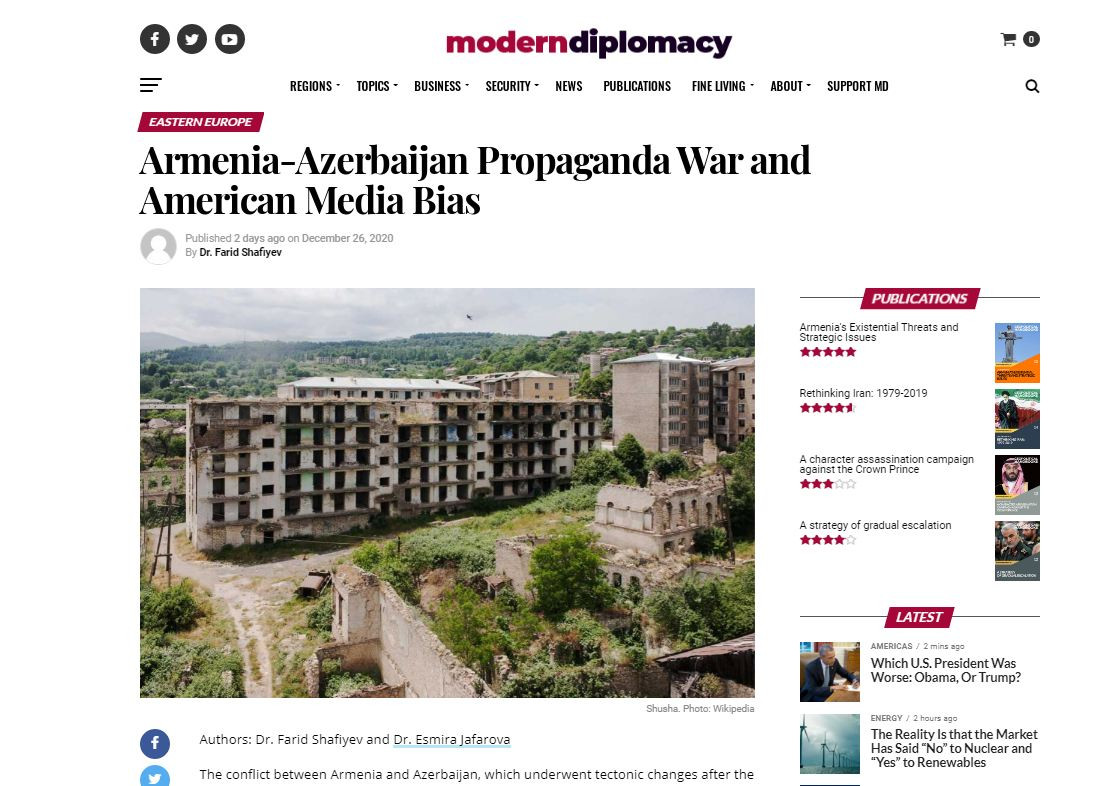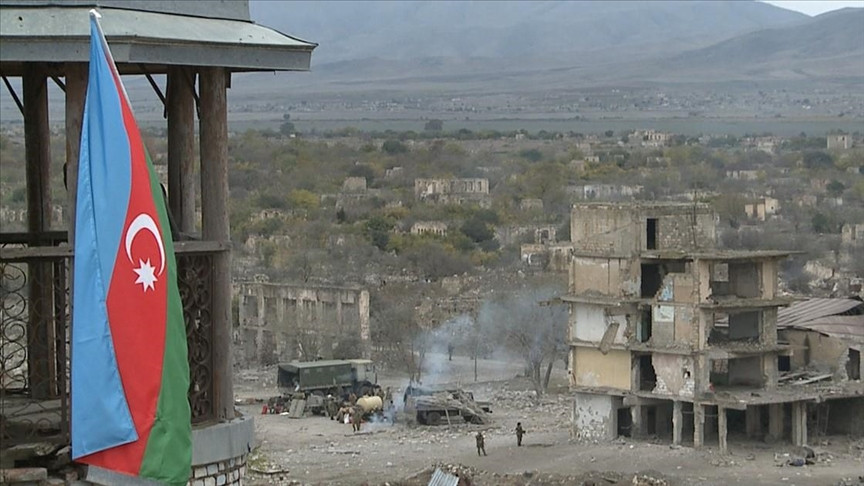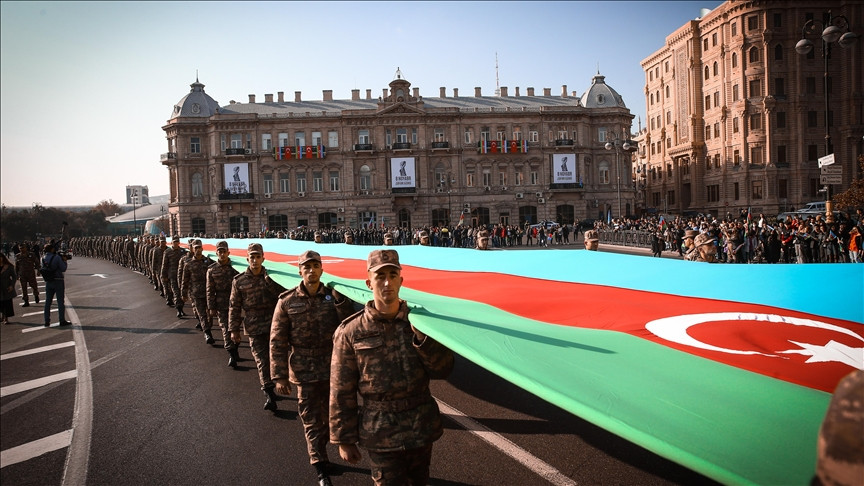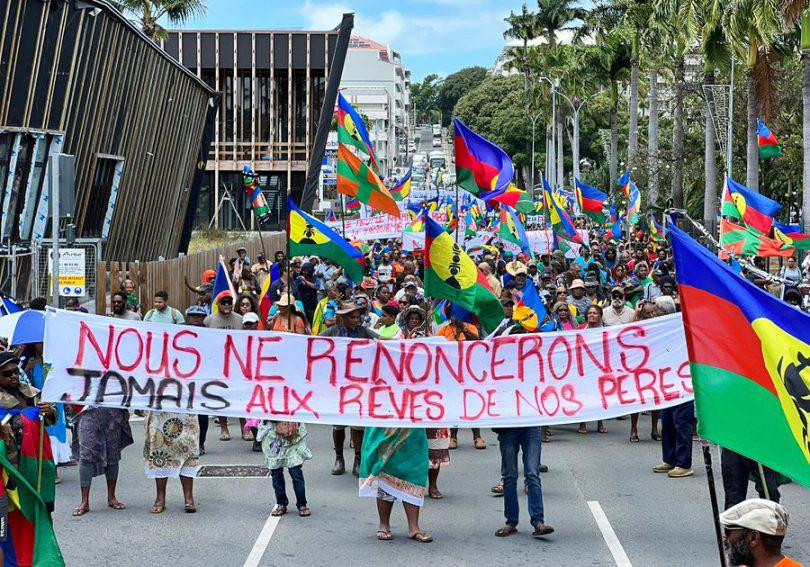The conflict between Armenia and Azerbaijan, which underwent tectonic changes after the Second Karabakh War (27.09-10.11.2020) had always had underlying bias perception in Western media, partly caused by religious perception and partly by ideological divide. Strong Armenian diaspora and lobby organizations, present in Western society helped to proliferate certain narrative about the history and the current trend in the conflict. Despite the fact that for almost thirty years internationally recognized territory of Azerbaijan was under Armenian occupation, Western media frequently portrayed the conflict as freedom movement of a Christian nation against Muslim Azerbaijan. Such misrepresentation was predetermined by a strong Orientalist bias, which in recent years reinforced by rising Islamophobia and Turkophobia in American and European media.
In this context, Armenians and Armenian sponsored scholars and experts launched a campaign, blaming Azerbaijan for the destruction of Christian heritage during the Second Karabakh War. More worrisome became trend that unlike previous years, Western media outlet refused to grant the Azerbaijani side a right of reply. Below are few examples of one-sidedness of approach to this problem in English language media.
The Conversation run an article titled “Armenians displaced from Nagorno-Karabakh fear their medieval churches will be destroyed” written by Christina Maranci, professor and chair of the Armenian Art and Architecture Department at Tufts University. She has written on this subject on several outlets, including “Cultural Heritage in the Crosshairs Once More” article in Wall Street Journal. However, the WSJ published an Azerbaijani response, while the Conversation ignored all communications from the Azerbaijani side.
The article misrepresents the true essence of the three decades-long territorial conflict between Armenia and Azerbaijan, including the causes and consequences of the Second Karabakh War and its impact on religious shrines.
Christina Maranci repeats historically false cliché about the 1921 decision of the Soviet Union on Nagorno-Karabakh region of Azerbaijan. This often spoken about decision of the Caucasian Bureau in fact ruled out to “keep” Nagorno-Karabakh within Azerbaijan, thus once again confirming that the region was a part of Azerbaijan in the first place. The manifold references to this decision by the protagonists of Armenian narrative purposefully portray it in a different light.
After the Second Karabakh War ended, dreadful picture opened before the eyes of the international community. Many international journalists, upon the visits to the liberated cities of Agdam, Fizuli and other de-occupied territories of Azerbaijan, eye-witnessed the complete destruction of Azerbaijani cities and infrastructure, including Azerbaijan’s religious heritage, mosques and places of worship.
The city of Agdam was described by many as the “Hiroshima of Caucasus” due to the magnitude of destruction that the city has incurred. Agdam Mosque was desecrated and almost destroyed by Armenia. But Agdam mosque is not the only one to have suffered this sort of ruination. Many mosques in the Azerbaijani territories that were under occupation for three decades were destroyed, turned into pigsty and animal stables.
On the contrary, Azerbaijan has vowed to restore and protect all religious shrines in the de-occupied territories, including Christian churches. For centuries, Christian heritage existed in the territory of Azerbaijan, which was mostly reigned by Azerbaijani/Turkic rulers. As the conflict erupted in 1988, many Western experts raised concern about the Armenian heritage, especially khachkars tomb-stones. Yet, Armenian Church right in the heart of Baku, damaged during the events of the early 1990s, has been fully restored and nearly 5,000 Armenian manuscripts are kept in the library of the church.
Around 67 mosques in the occupied territories of Azerbaijan were fully destroyed and, despite repeated calls from the government of Azerbaijan, UNESCO refused to send a fact-finding mission. However, once Armenians voiced their concern about Armenian churches in Karabakh, UNESCO demanded immediate access despite the problem with landmines in the newly liberated territories.
Besides mosques, many other monuments and cultural installations were razed to the ground or obliterated. This remains out of the radar of Christina Maranci in the attempt to brush off Azerbaijan’s rich multicultural and multi-confessional heritage.
As a matter of fact, two Armenian shrines – Gazanchesots church in Shusha and Dadivank monastery in Vank, which were at the spotlight of the Western media remain overall intact. Gazanchesots suffered from accidental rocket strike, and the government of Azerbaijan pledges to restore it as they did the Armenian Church in Baku.
Another propaganda piece slipped into the New York Review of Books, which also refused to publish a response from the authors of this writing. The article “Armenia’s Tragedy in Shushi” by Viken Berberian contains such blatant misrepresentation of the history of Shusha that raises a question how it could have survived the review process, if any.
History is indeed a tricky subject. Warring sides have opposite views of things and their interpretation are mutually contradictory, especially when it comes to ethnic conflicts. But in case of Viken Berberian’s treatment of facts that are otherwise well known to regional experts, the author intentionally misled readers.
Mainstream historians believe that Shusha was founded by the Azerbaijani-Turkic ruler Panakh ali Khan in 1752 as the capital of the Karabakh khanate. During the city’s whole history until its capture on May 8, 1992, its population was mainly overwhelmingly Turkic/Azerbaijani (Thomas de Waal, Black Garden, NYU Press, 2013, p. 13). In 1823, after the Russian conquest, the Turkic population (called “Tatars” by the Russians) was 72 percent (“Opisanie Karabakhskoi provintsii sostavlennoe v 1823 g. po rasporiazheniiu glavnoupravliaiushego v Gruzii Ermolova deistvitel’nim statskim sovetnikom Mogilevskim i polkovnikom Ermolovim 2-m” Tbilisi, 1866). By 1897 the Russian settlement policy had shrunk this proportion to 41 percent. The author should have treated demographic changes more fairly and not focus only on the period between 1897 to 1920.
The Russian conquest of the South Caucasus, which included the Karabakh khanate, changed the fate of the people who had been living there more or less peacefully for centuries. Specifically, worse days arrived for Muslim Azerbaijanis and better ones for Christian Armenians. The American scholar Tadeusz Swietochowski noted that Armenians enjoyed a Russian protective shield that enabled them to advance socially and politically at a fast pace and to capture important economic positions in the region (Russian Azerbaijan, Cambridge University Press, 1985, p.37). However, at the end of the day, all the Russian imperial policies revolved around the divide and rule principle, and both ethnic groups were but pawns in larger geopolitical game.
Shusha’s history tells the story of the tragedy of the conflict a century ago. Once violence between Armenians and Azerbaijanis began in 1905, both communities suffered from attacks and lootings. In 1920, it was mostly Armenians who suffered from violence instigated by territorial dispute between young republics, Azerbaijan and Armenia, both of which eventually fell under the Bolshevik yoke. The fall of Shusha in May 1992 was a turning point in the modern history of the conflict between Armenia and Azerbaijan. It led to the ethnic cleansing of Azerbaijani population of the entire region of historical Karabakh, which was and is internationally recognized as part of Azerbaijan. De Waal wrote that “After Armenian forces captured the town, hundreds of people swarmed into it, looting and burning.” Most historical buildings were destroyed, along with museums and the residences of many famous Azerbaijani musicians like Uzeyir Hajibeyov (composer of first opera from out of the east, Leyli and Mejnun) and the singer Bulbul.
Armenian warlords tried to erase the Azerbaijani heritage of the city. For example, the Yukhari Govhar Agha mosque was “renovated” by Iranians and rebranded as Iranian heritage. But for most of its occupation by Armenians, Shusha was a “sad city” as the current Armenia’s Prime Minister Nikol Pashinyan described it recently. While Armenian nationalists deplored their recent loss of Shusha, Pashinyan bitterly exclaimed that Shusha was lost 30 years ago since little was invested there to develop or even maintain the city.
Shusha has enormous symbolic importance for both Armenians and Azerbaijanis. The same is true for Armenia’s capital Yerevan, which contained almost half Azerbaijani population therein in the beginning of the twentieth century, but eventually fully expelled in 1988-89. The only survived Blue Mosque in Yerevan was also rebranded by Armenian authorities as “Persian” heritage. Viken Berberian focused exclusively on Armenian tragedies without mentioning the well-known evidence of the massacres and expulsions of Azerbaijanis from Armenia. In the whole article, he limits this subject to a single sentence about Khojaly – a town that was entirely exterminated, including women and children among 613 victims.
The author misrepresents further the causes of the recent war between Armenia and Azerbaijan, which was driven by warlord-presidents Robert Kocharyan (1998-2008) and Serge Sargsyan (2008-2018) as well as by the incumbent Nikol Pashinyan’s populist demagogy. According to Gerard Libaridian, ex-adviser to president Levon Ter-Petrosian (1991-1998), the Armenian side abandoned the sober reasoning, while the entire international community spoke against the occupation of Azerbaijani territories, especially the seven districts around Nagorno-Karabakh.
The whole tragedy of the conflict was ignited by irredentist claims from Armenian nationalists that they launched in February 1988. Murky and highly disputable historical “evidence” brought misery to both Armenians and Azerbaijanis. The few reasonable voices among the Armenian diaspora were drowned out and suppressed by jingoist rhetoric. As the Armenian scholar Arman Grigorian (Lehigh University) notes, the Armenian media is responsible for encouraging the nationalist mythology that led to the present situation.
Since the war is over, there is only one future, and that future is reconciliation between Armenians and Azerbaijanis. The propaganda pieces have no place in such efforts. It is too regrettable that the Conversation and New York Review of Books did not verify the spurious claims contained in these highly biased and controversial pieces, about the cultural heritage, history and the conflict in general, before publishing it.
https://moderndiplomacy.eu/2020/12/26/armenia-azerbaijan-propaganda-war-and-american-media-bias/








